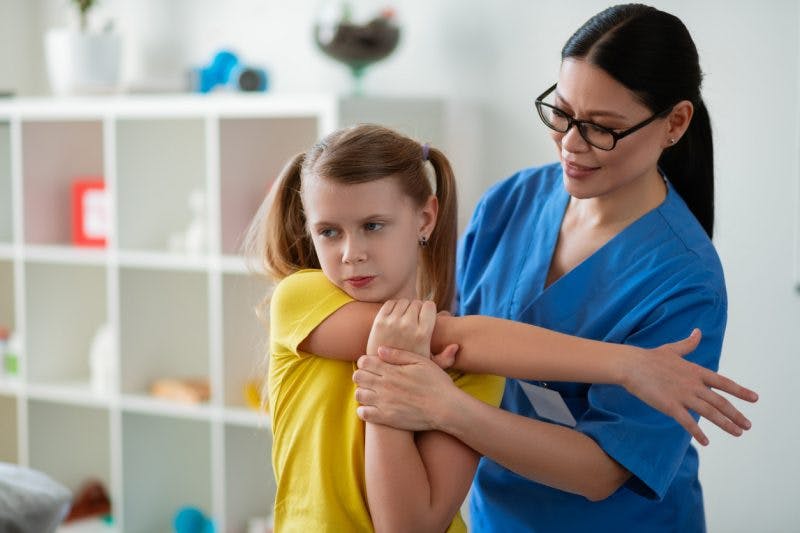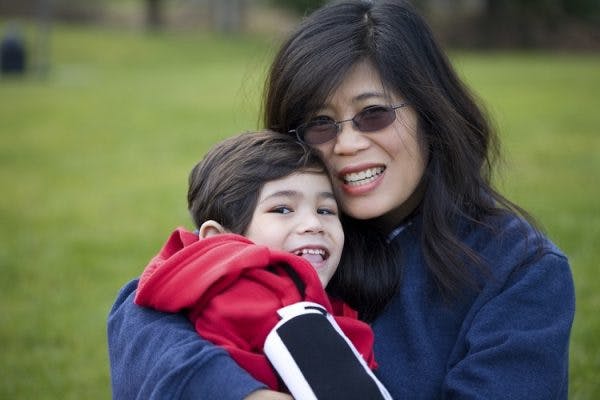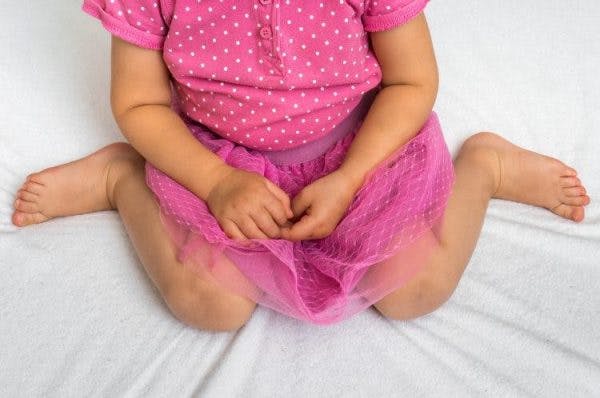Cerebral palsy is a motor disability caused by damage to the developing brain before, during, or shortly after birth. Therefore, when a teenager has cerebral palsy, they’ve likely lived with their motor impairments their entire lives. This may lead some individuals to believe that if they haven’t gotten better by their teen years, they’ve probably reached their limit. However, that is not true.
Many individuals with cerebral palsy improve their mobility in their teens. To help you understand why the teen years are actually a prime time for promoting functional improvements, this article will discuss:
- The development of teen brains
- How to improve mobility
- Teen recovery stories
- Tips for parents of teens with cerebral palsy
The Developing Brain of Teenagers with Cerebral Palsy
The teen years are a crucial period for brain development. Dr. Karen Pape explains in her book, The Boy Who Could Run But Not Walk, that during puberty, “teenagers gain up to 40% more brainpower” and that “most of the change is in maturation of functions and improvement of the interconnections between different brain areas.”
The prefrontal cortex continues to develop well into adulthood. It’s the part of the brain responsible for understanding actions and consequences, impulse control, and decision-making. As this part of the brain matures, teens develop a better understanding of how to set and achieve goals.
Instead of mindlessly going to physical therapy or wearing orthotics because their parents make them, teenagers with cerebral palsy will begin to understand the purpose of committing to management interventions for their motor impairments. They’ll figure out that improving their functional abilities is something that they want and are capable of motivating themselves.
The brains and bodies of teens are still developing and with the right mindset, individuals have the potential to improve their motor functions.
How Teens with Cerebral Palsy Can Improve Their Mobility

With all this potential for improvement, why do motor functions often appear to worsen or plateau in teenagers?
For a long time, it was assumed that the brain cannot adapt and that any effects of brain damage were permanent. We now know that the brain has neuroplasticity. Neuroplasticity is the brain’s ability to adapt and reorganize its neural circuitry. It allows for functions affected by brain damage to be rewired to healthy regions of the brain and improved.
The best way to promote neuroplasticity is through massed practice. The brain is extremely adaptive, and consistent repetition helps reinforce demand for affected functions. As a result, the more you practice the skills you want to improve, the more rewiring and strengthening of neural pathways occurs in the brain.
Thousands of repetitions are required to rewire the brain, and many individuals with cerebral palsy don’t participate in the necessary therapy or exercise to achieve this. Therefore, it’s essential for teenagers with cerebral palsy to practice high repetitions of targeted exercises daily (whether they have therapy that day or not) to promote improvements in motor functions.
Often, individuals struggle to practice the exercises provided by a physical therapist at home. They either get bored or lose motivation. Investing in home rehabilitation devices can help encourage individuals to consistently practice high repetitions of therapeutic exercises.
For example, FitMi is an interactive home therapy program that motivates individuals to perform the repetitions they need to improve their mobility. It includes 40 exercises for the hands, arms, core, and legs to promote improvements in motor control throughout the entire body. It also adapts to the user’s ability level to ensure that they’re challenged the perfect amount to stay engaged and keep practicing.
Although focusing on specific targeted exercises is a great way to promote improvements, even practicing certain activities regularly can help improve motor functions. For example, if an individual is working on improving standing balance, they may find that practicing yoga yields excellent benefits and is more enjoyable and engaging. Alternatively, taking up cookie decorating may be a way to promote coordination and precision for a teen who has difficulties with fine motor skills.
Recovery Stories of Teenagers with Cerebral Palsy
To help prove that teenagers with cerebral palsy can continue to see improvements in their motor functions, we’re going to share the experiences of two teens.
Meet Mason
This first story is from Dr. Karen Pape’s The Boy Who Could Run But Not Walk. Mason is a teen with CP that refused to wear orthotics and continue additional physical therapy because he was convinced that he couldn’t get any better and accepted his circumstances.
He eventually ended up joining an intensive, 1-week physical therapy program. In that single week, he experienced improved posture and balance. He even learned to walk with his legs instead of leaning his weight on his assistive devices.
From skeptic to firm believer, Mason now understands that if he stays motivated and puts in the work, neuroplasticity is possible, and great improvements can happen.
Meet Alex
Alex is also a teen with cerebral palsy. She’s been going to physical therapy since she was 1 year old, but it wasn’t until she joined an intensive physical therapy program that she was able to walk with crutches.
The difference between traditional physical therapy and intensive physical therapy is the amount of time dedicated each week toward improving motor functions. Rather than going in for an hour a few times a week, intensive physical therapy requires many hours of practice to be concentrated over a shorter period. As a result, individuals perform way more repetitions than they would in traditional physical therapy, which stimulates the brain to adapt.
“Alex never would have accomplished this through traditional PT alone. Traditional therapy sessions do not engage individuals in long enough periods of time, but her local PT integrated with other forms of therapy will now help maintain this progress.”
By participating in intensive physical therapy, Alex has become more confident, motivated, and strong.
Tips for Parents of Teenagers with Cerebral Palsy

Cerebral palsy is a life-long condition and it’s important for teens to understand what to do when their caregivers aren’t around.
As a parent, it’s normal to want to help your child as much as possible, especially if they have a motor disability like cerebral palsy. However, being too helpful can backfire. Consider adopting a more hands-free approach to parenting so that your teen has more freedom to develop their independence and figure things out on their own.
Teens with cerebral palsy should practice asking others for help as needed, performing activities of daily living, and explaining their disability so that others can understand their needs. This will help them navigate school, work, and other social environments with more confidence and independence.
Understanding Cerebral Palsy in Teenagers: Key Points
When it comes down to it, neuroplasticity is possible at any age. The brain is always making new connections. However, there are times in life (like adolescence) when the brain experiences heightened levels of neuroplasticity and the potential to improve is greater.
While the brain damage that caused cerebral palsy will not get worse over time, complications of CP such as pain and spasticity can. Therefore, committing to management interventions like physical therapy, orthotics, and medications is essential.
There’s hope for functional improvement in teenagers with cerebral palsy, but you need to be willing to put in the work and perform the repetitions necessary to promote neuroplasticity. We hope this article helped you understand how cerebral palsy can affect teens and that it’s never too late to improve your mobility.











